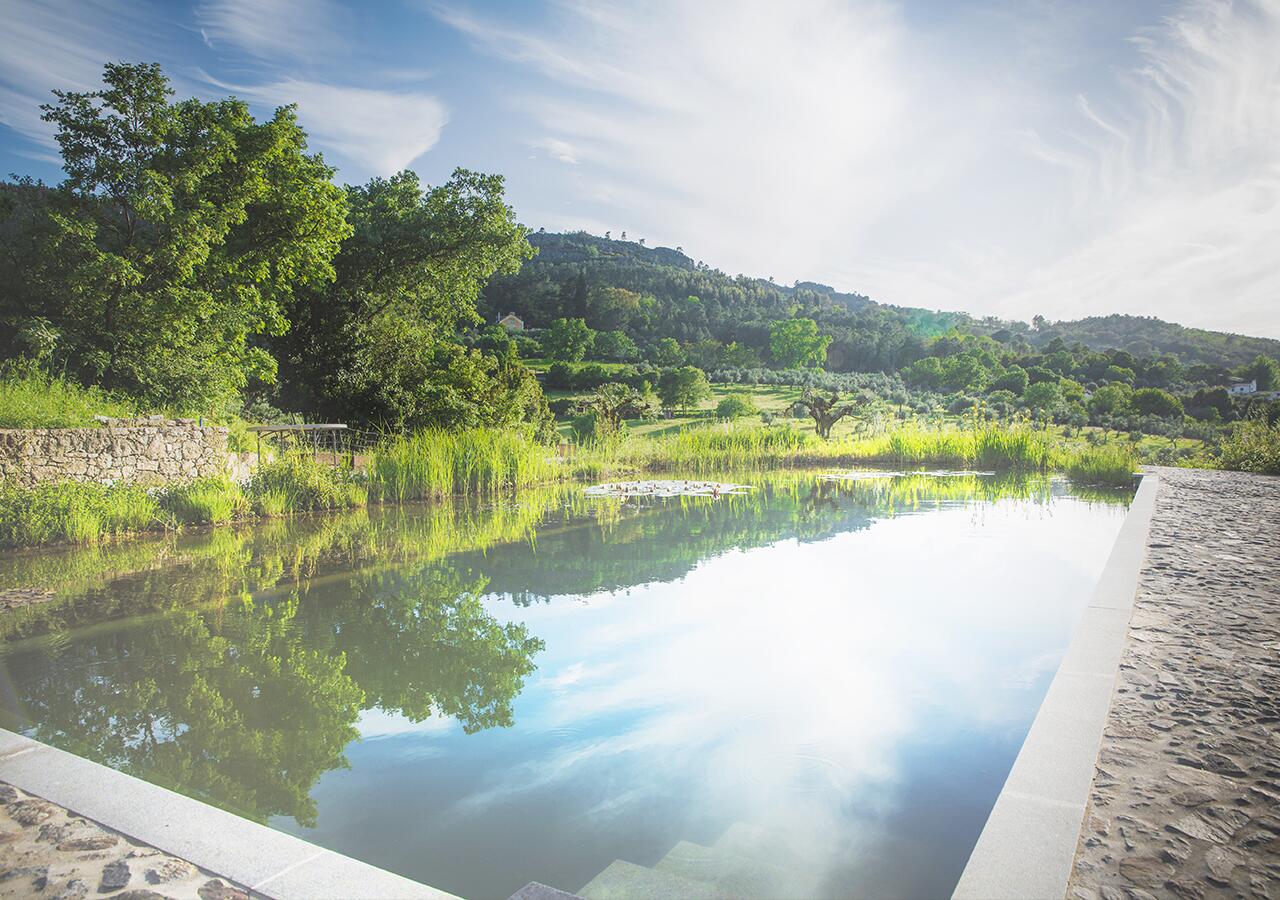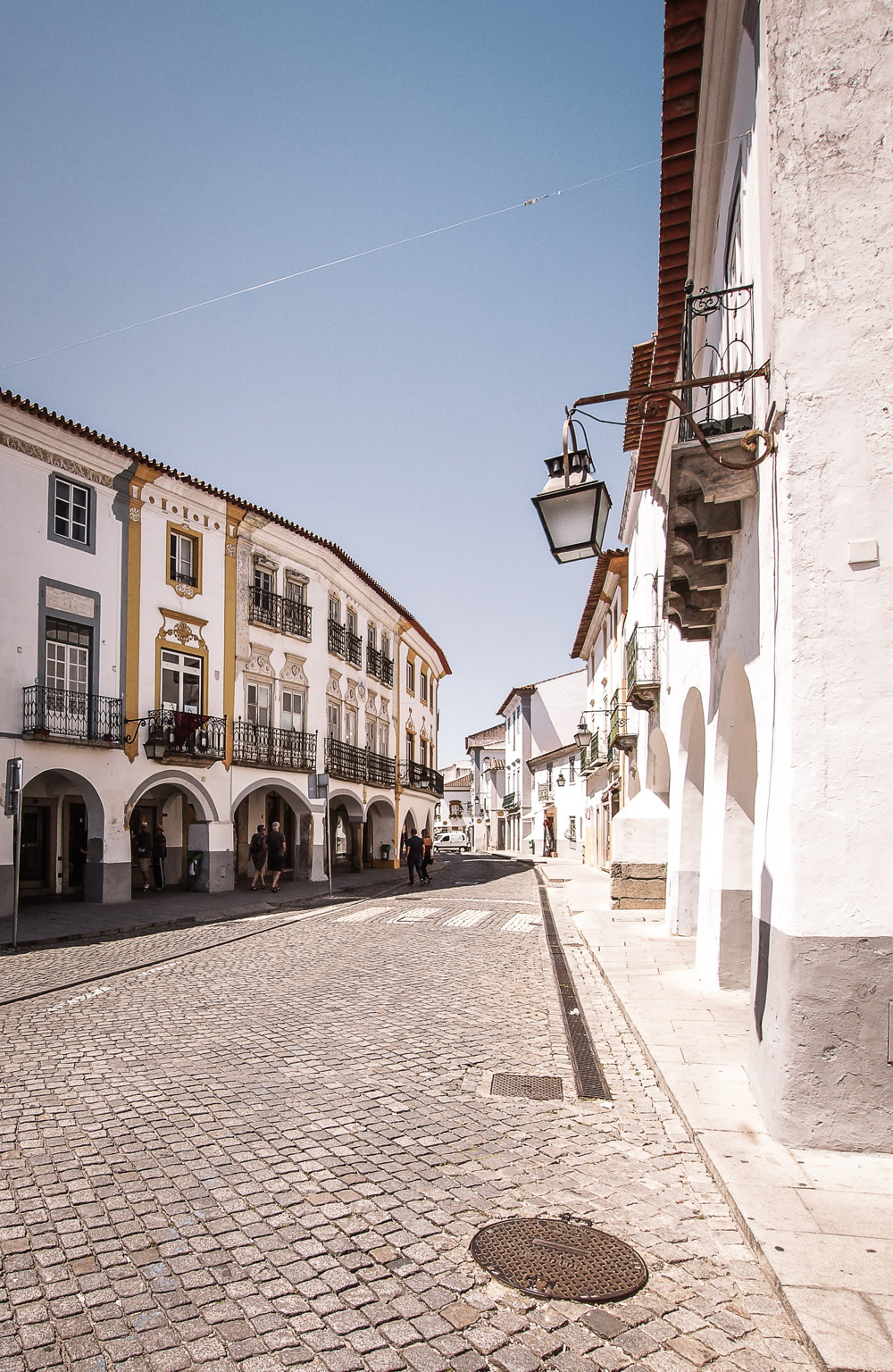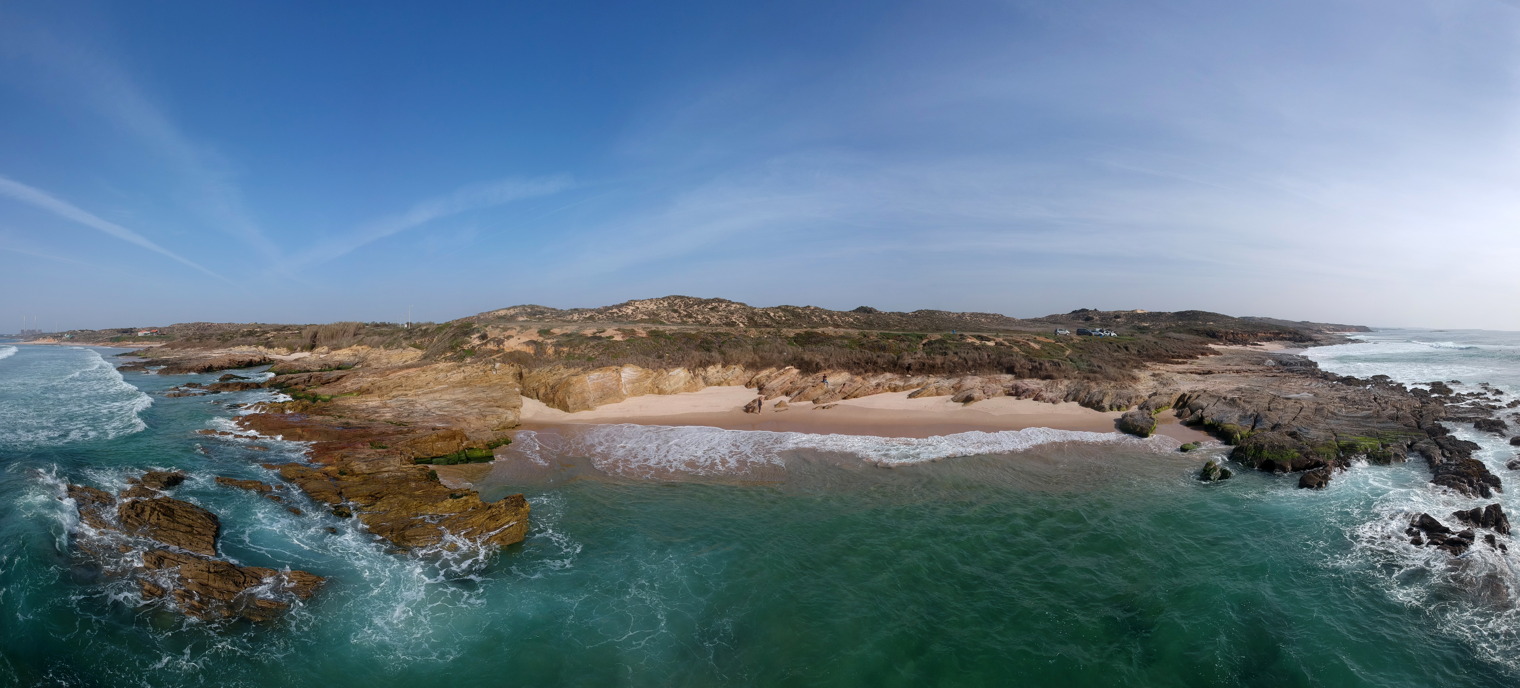Alentejo, where time stands still
Disclosure: Bear in mind that some of the links in this post are affiliate links and if you go through them to make a purchase we will earn a commission at no additional cost to you. We chose these companies / hotels because of their quality and not because of the commission we receive from your purchases.
After a two-hour drive from Lisbon Airport me and my girlfriend arrive at our holiday destination in Castelo de Vide. We rented an amazing eco friendly house next to an endless vineyard with golden colors of the setting sun. The house is amazing and our natural pool asked for a refreshing dive. What a great start of our holiday. Picture by booking.com
Picture by booking.com
Rolling green hills
Alentejo region begins east of the city of Lisbon and extends along the coast above the Algarve. Alentejo is about as big as Belgium, but there only 700,000 inhabitants. The quiet region is known for its rolling green hills and it is a true hiking paradise. There are more than a thousand kilometers of footpaths. Who is interested in history is also at the right place. Architectural highlights can be found in the castles, ancient monasteries or when exploring the countless charming villages.

Rich places
Our place to sleep in the village Castelo de Vide is located in the north of Alentejo. Castelo de Vide is a fascinating place. Here you will find the best preserved Jewish quarter of Portugal. We walk through the labyrinth of streets where the Jewish presence is found in the street names and in the religious signs of Hebrew culture on the granite doors. Half an hour's drive from Castelo de Vide you will find the super-special national park called Parque Natural da Serra de S. Mamede.
While we enjoy a cup of tea on the terrace, the waiter tells us us that this nature reserve came into existence 300-400 million years ago as a result of the moving continents. He recommends us a few stops for our road trip by car: Portalegre, Crato and Marvão. All three cities are rich in historical heritage. Portalegre was a prosperous city in the 17th and 18th century, thanks to investment in the textile industry. As we continue the city walk, we enjoy the many palaces and monuments, such as the medieval Castle and the great cathedral. At lunch we eat at 'Restaurante O Poeiras', highly recommended!
Marvão is so high that you can see the back of passing bird. First we visit the castle and the view from here is magical when you look out over the green rolling landscape. Then we walk through the old streets of the small village. Thanks to the authentic houses with Gothic windows and iron balconies it feels you are in another time.
Crato has lots of greenery and endless plains. The flat landscape is full with oak, olive trees and small streets with authentic white houses and beautiful historical sites.
Hiking paradise
In addition to its cultural and historical heritage, Parque Natural the São Mamede offers lovely hiking and mountain biking possibilities. Nature is unique here and there is a great biological diversity. You might encounter wild boars, foxes, badgers, rare birds such as the eagle hawk, the sparrowhawk and the forest owl.
During our holiday we bring several visits to São Mamede and not only to enjoy mother nature, but also to eat in the restaurants in the lovely towns.
The most beautiful beach
 We wake up on day four and it is delicious weather which makes us go to the beach! Two hours' drive away you find Porto Covo. We visit Praia Pequena and Praia dos Buizinhos. Those are small pristine sandy beaches on the coast, dotted with stones and beautiful sand-brown cliffs. We also visit Praia da Samouqueira a beach that is included in the list of 25 most beautiful beaches in Europe (according to The Guardian).
We wake up on day four and it is delicious weather which makes us go to the beach! Two hours' drive away you find Porto Covo. We visit Praia Pequena and Praia dos Buizinhos. Those are small pristine sandy beaches on the coast, dotted with stones and beautiful sand-brown cliffs. We also visit Praia da Samouqueira a beach that is included in the list of 25 most beautiful beaches in Europe (according to The Guardian). Best time to visit
The period May to mid-October is the overall best travel time for Portugal. For a beach holiday, the months of July, August and the beginning of September are the moments to visit. Click here for more climate information for Castelo de Vide.
Written by our reporter and co-founder Jan:
Click here to find him on Instagram